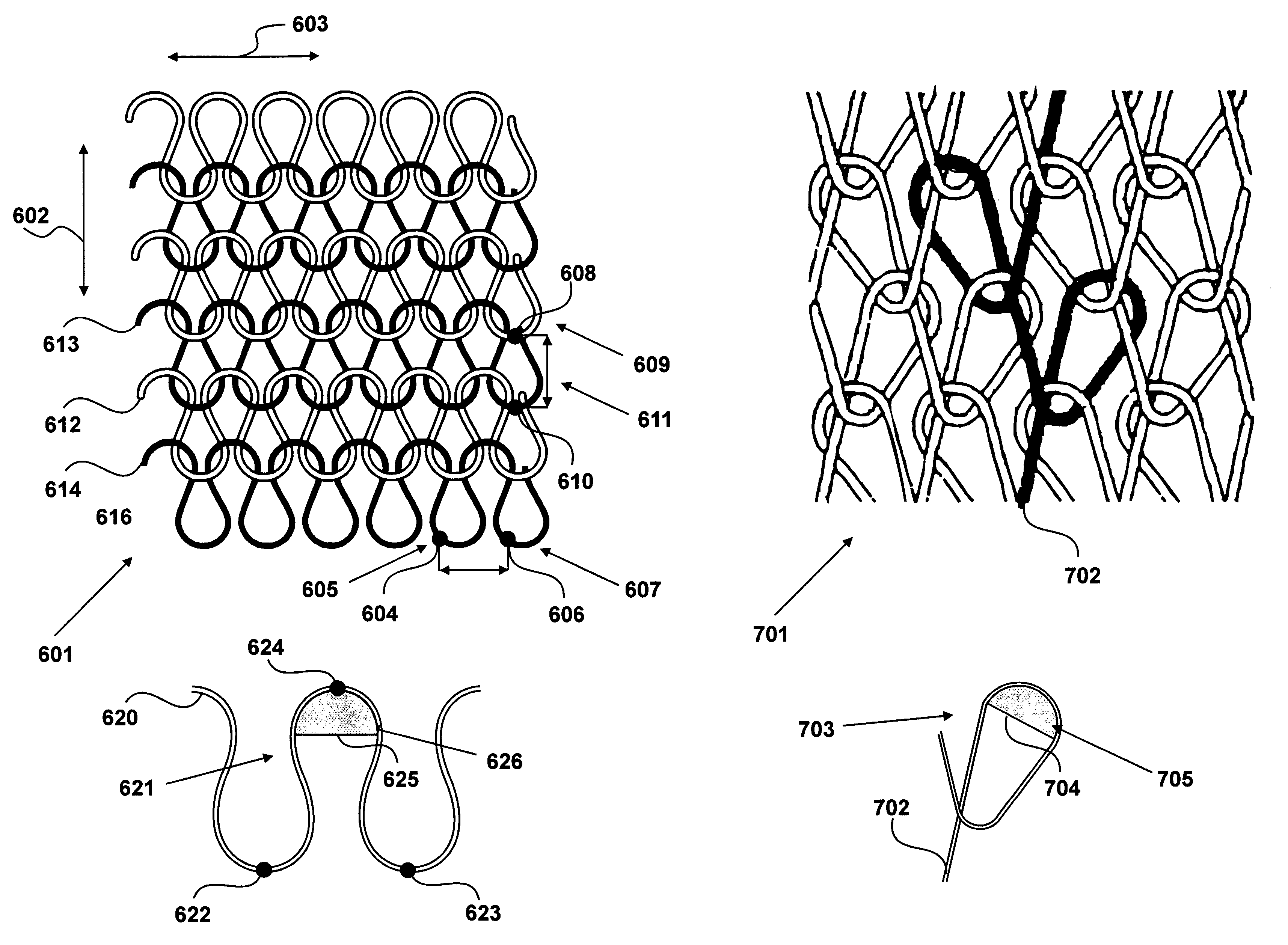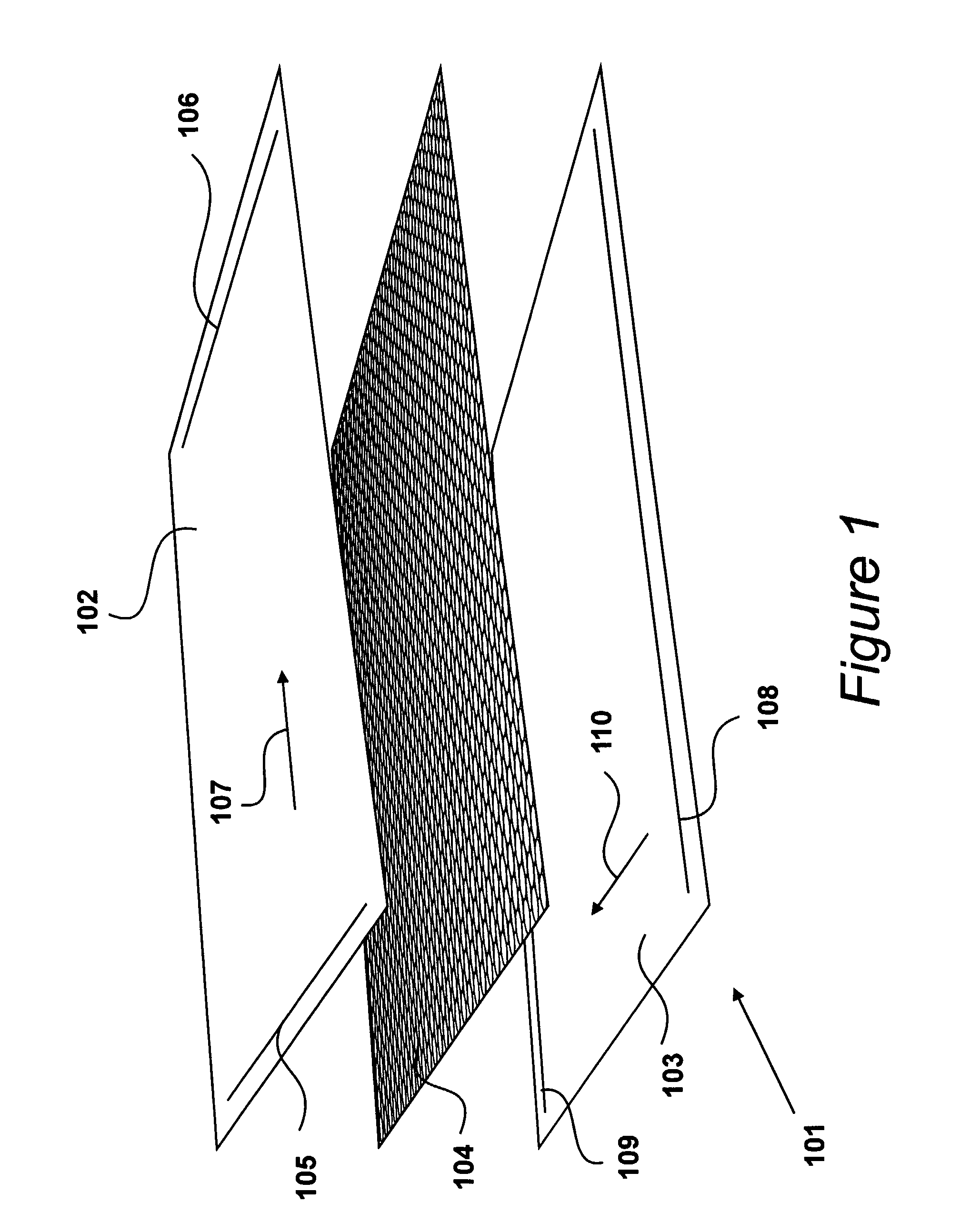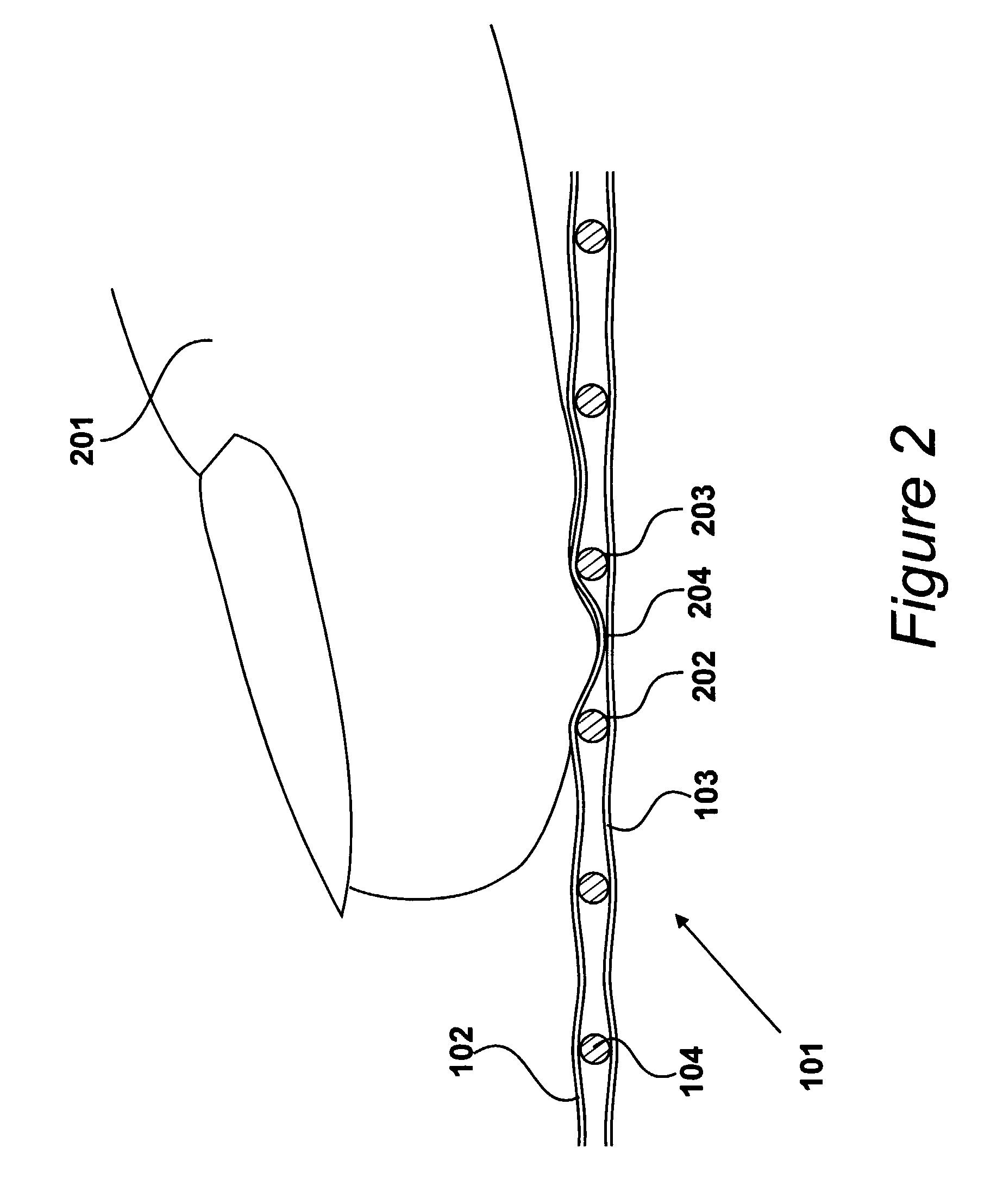Knitted sensor
a sensor and knitted technology, applied in knitting, warp knitting, weaving and other directions, can solve the problems of reducing the viable range of applications of the sensor, affecting the sensitivity of mechanical interactions at different locations, and the frequency of undesirable triggering of the sensor may be unacceptable for some applications,
- Summary
- Abstract
- Description
- Claims
- Application Information
AI Technical Summary
Benefits of technology
Problems solved by technology
Method used
Image
Examples
Embodiment Construction
FIG. 1
[0031]An exploded view of a position sensor is shown in FIG. 1. Sensor 101 utilises a three layer construction including a first electrically conducting layer 102, a second electrically conducting layer 103 and an intermediate separating layer 104, in this example a mesh fabricated from electrically insulating material, disposed between the two conductive textile layers 102, 103.
[0032]The electrically conducting layers are preferably in the form of fabrics machined from a mixture of electrically conducting fibres and insulating fibres. An example of a fabric of this type is disclosed in International Patent Publication No. WO 00 / 72240.
[0033]First electrically conducting layer 102 is provided with a first pair of conducting members 105, 106, with one extending along each edge of a first pair of opposed edges of the layer. In response to an electrical potential applied between these conducting members 105, 106 electrical current may flow across first layer 102 in a direction ind...
PUM
 Login to View More
Login to View More Abstract
Description
Claims
Application Information
 Login to View More
Login to View More - R&D
- Intellectual Property
- Life Sciences
- Materials
- Tech Scout
- Unparalleled Data Quality
- Higher Quality Content
- 60% Fewer Hallucinations
Browse by: Latest US Patents, China's latest patents, Technical Efficacy Thesaurus, Application Domain, Technology Topic, Popular Technical Reports.
© 2025 PatSnap. All rights reserved.Legal|Privacy policy|Modern Slavery Act Transparency Statement|Sitemap|About US| Contact US: help@patsnap.com



